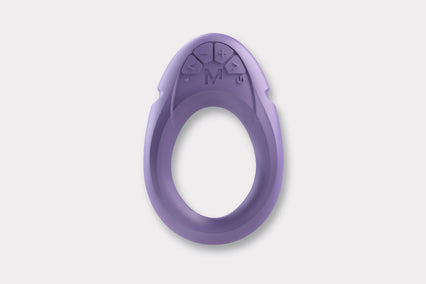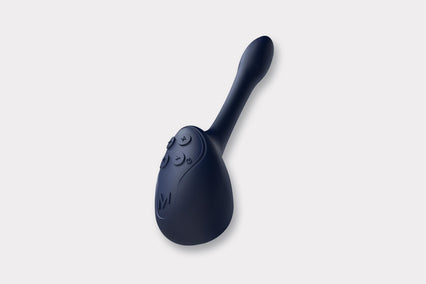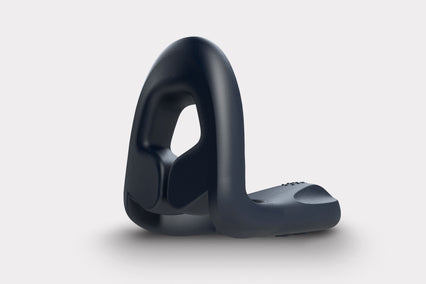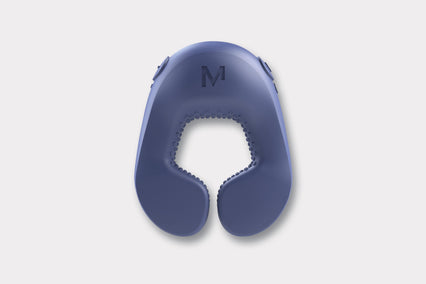If you’re reading this and thinking, wait, aren’t kegel exercises for women? That’s because Kegel exercises were initially developed by Dr. Arnold H. Kegel to help women who experience bladder incontinence after childbirth. However, research found that these pelvic floor exercises were equally beneficial for men, especially for those who experience premature ejaculation, prostatitis, benign prostatic hyperplasia, and other sexual problems. Since all humans have pubococcygeal muscles, or pelvic floor muscles, it makes sense that everyone, regardless of gender, can reap their physical and sexual benefits.
We’ve answered some of the most frequently asked questions about Kegel exercises with our step-by-step guide below.
What are Kegel exercises?
Kegel exercises, also called pelvic floor exercises, are exercises that involve repetitive contracting and/or relaxing of the muscles of the pelvic floor to help strengthen, stretch, or improve muscle tone of your pelvic floor. These muscles are responsible for regulating your sexual function, urination, bowel movement, as well as support your pelvic organs, including your urethra, bladder, and prostate. Some medical professionals recommend Kegel exercises to help people who experience urinary or bowel control problems, or those who have concerns about their sexual function.
What weakens pelvic floor muscles?
Health conditions, activities, or experiences that put stress on your pelvic floor muscles may cause your pelvic muscles to weaken. These include:
- Obesity or being overweight
- Living a sedentary lifestyle
- Prostate surgery
- Repeated heavy lifting (e.g., at work or the gym)
- Genetics
- Frequent bouts of coughing or sneezing
- High-intensity exercises and contact sports
- Old age
What are the benefits of Kegel exercises in your sex life?
Exercising your pelvic floor muscles can provide multiple benefits in your sex life. They can help you perform your best during sex and experience optimal satisfaction by increasing blood flow to the groin, promoting good bladder control, and improving erections, orgasms, and ejaculations.
Pelvic floor exercises are also medically recognized as a treatment option for erectile dysfunction (ED), which is the inability to achieve an erection that’s firm enough for penetration. Physical therapists recommend people struggling with ED patients to do Kegel exercises coupled with lifestyle changes, such as quitting smoking, limiting alcohol intake, and maintaining a healthy diet, to improve erectile dysfunction symptoms.

Do Kegel exercises for men really work for premature ejaculation?
Yes, Kegel exercises can help you delay ejaculation when done correctly and consistently. Research conducted about pelvic floor rehabilitation found that Kegel exercises help 61% of males control premature ejaculation (PE), a common sexual concern that happens when a man reaches his climax and ejaculates sooner than he or his partner desires. These exercises can help men reach firmer erections as the blood flow into the penis improves. They can also help delay ejaculation because you’ll have more control over your muscles, leading to more pleasurable and satisfying sex.
A study conducted by urologists showed that 82.5% of the men who took part in the study have increased their sexual stamina. Kegel exercises can also help increase the number of orgasms you can have in a certain period of time.
Just like those with ED, men who suffer from PE may also gain more control of their orgasms with the help of devices like kGoal's Boost, which is an interactive at-home Kegel trainer for men.
On top of doing Kegel exercises, you can practice delaying ejaculation by using a sex toy during solo play. You can do that by stopping the stimulation right before you reach the climax, and then stimulating yourself again with the sex toy after waiting for a few seconds.
How to do Kegel exercises
Kegel exercises are clench-and-release exercises that you can perform without any equipment. While Kegel exercises are not complex exercises, finding and activating the correct muscles is more complicated than first glance. 1 out of 3 people performs kegel exercises incorrectly, or don’t reap the benefits. It is recommended to seek the guidance of a doctor or physical therapist before incorporating kegels into your health routine.
Once you have located the proper pelvic muscles, (see below for step-by-step help) start exercising your pelvic floor muscles by doing the following steps while lying down in bed, sitting down, or standing up:
- Tighten and hold your pelvic floor muscles for 3 to 5 seconds.
- Relax your pelvic muscles, and count another 3 to 5 seconds.
- Repeat this 10 to 20 times three to four times a day. But you can start slow and with fewer repetitions, depending on what you’re most comfortable with, or what your doctor recommends.
If you are doing Kegel exercises while standing up, be sure that your feet are hip-width apart and your toes are slightly pointing inwards so it will be easier to focus on your pelvic floor and avoid tension in your inner thighs.
Another way to tighten your pelvic floor muscle is by doing the following:
- Squeeze the muscles in your anus for 5 to 10 seconds.
- Relax your pelvic floor muscles after each attempt.
- Repeat this 10 to 20 times three to four times a day.
Kegel exercises should be pain-free. If you experience discomfort while performing these exercises, chances are you might be using the wrong muscles.

How do I find my pelvic floor muscles?
Knowing the right muscles to exercise can help you achieve your desired results. They make up the bottom of your pelvis, and they are the muscles you use when you’re trying to stop yourself from urinating.
There are a few methods for locating the proper muscles:
- Pretend you’re trying to stop passing gas.
- While urinating, stop the flow of urine. If you feel the muscles in your bladder or anus tighten and move up, you did the right thing and you’ve found your pelvic floor muscles.
- Insert a finger into your rectum and try squeezing it without tightening the muscles of your buttocks, abdomen, or thighs.
If you’re still unsure about the location of your pelvic floor muscles, you may schedule an appointment with your doctor for biofeedback.
Additional reminders for proper Kegel exercises
Here are a few reminders that can help you avoid potential health consequences caused by improper practice of Kegel exercises:
- Be sure that your bladder is empty before exercising.
- Do not hold your breath when tightening your pelvic floor muscle.
- Do not push down and squeeze your muscles together tightly (imagine lifting this muscle).
- Relax the abdominal muscles, buttocks, thighs, and chest muscles.
- Avoid exercising while urinating. Doing Kegel exercises while urinating may weaken your pelvic floor muscles over time or cause damage to your kidneys and bladder.
- If your pelvic floor muscles are weak, it’s advisable to do it lying down first, and then slowly progress by doing it while sitting or standing up.
- Do not exercise beyond the recommended number of repetitions. Overdoing it may lead to straining during urination.
- Make sure you integrate pelvic floor relaxation stretches and techniques into your pelvic floor training. Try a device like Boost, the first smart pelvic floor trainer that offers pelvic floor Down Training to compliment Kegels.
- If you have difficulties performing Kegel exercises, schedule a visit with your doctor or physical therapist for biofeedback training or electrical stimulation of your pelvic floor muscles.

When will I see results from Kegel exercises?
Just like any type of exercise, seeing results from doing Kegel exercises may take time, so patience and consistency are very essential. You may notice results, such as having more control towards your ejaculation time, enjoying better performance during sex, and having bigger and stronger erections, in about four to six weeks from the time you started. However, don't be discouraged if you don’t see the results you want within this timeframe. Every person’s body responds to exercises and treatment options differently, so the timeline of results may vary per individual.
Takeaway
Kegel exercises aren't just for women - men have pelvic floors too, and these exercises can provide multiple benefits to male sexual health. However, if Kegels aren't your thing, or you want to explore other options that improve sexual performance, male vibrators, like the FDA-registered Tenuto 2, can do that, and more.















































